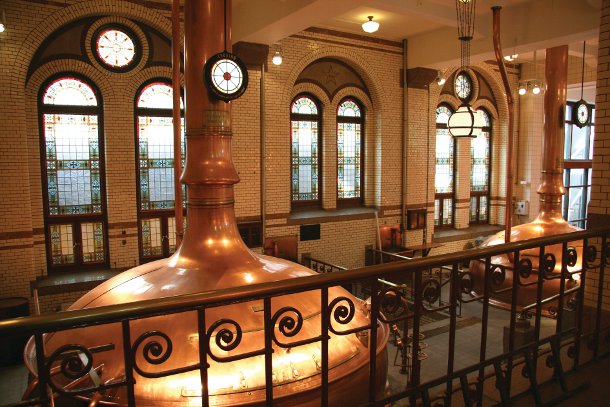How Heineken and Hillarys Blinds are getting more out of business data

Updating your CRM? Find out what to expect
Understanding the needs of your customer is one of the first rules of business. So it's no surprise that even in these tough times nearly half of enterprises and a fifth of SMEs planned to upgrade their customer relationship management (CRM) applications this year, according to Forrester Research.
But because CRM deals with sensitive customer data, upgrading a system is not without its challenges. silicon.com spoke to two organisations - brewer Heineken and window blind maker Hillarys Blinds - at the recent SAP UK & Ireland user group conference to find out more about their projects aimed at getting more from their business data.
Heineken puts the fizz back into mobile sales
Heineken put SAP CRM 5.0 in place last year after spending many years working with 14 different customer systems including Microsoft Access databases and Excel spreadsheets.
According to Heineken's UK business change lead Vicki Lowson, the decision to move to SAP CRM - taken in 2008 - was aimed at moving all this data to a single location. "It's all about quality of data and availability of data," she told silicon.com
Lowson said Heineken salespeople often have one-to-one relationships with their customers and the previously fragmented nature of customer systems meant it was difficult to produce an accurate picture of customer activity.

Heineken's mobile sales system is delivering substantial benefits
(Photo credit: Heineken)
The company tested a mobile sales application in 2008 but the technology was pulled after just seven months due to a tricky user interface that led to low take-up and the app failing to deliver the intended benefits. "It wasn't motivational for salespeople," Lowson said.
Following the problematic project, Heineken started to work with IT services company De Villiers Walton (DVW) in early 2009 to move to the SAP CRM 5.0 system and make it more user-friendly.
Using DVW's ZUI interface builder framework, much of the complexity of the SAP CRM technology was removed, as the SAP CRM system was customised for Heineken's use. "The biggest aim of the project was to reduce the amount of forms and admin necessary for the sales force to input just to complete one task," Lowson said.
As well as the work to simplify the interface, Heineken also had to migrate the sales data. "The biggest challenge was removing the legacy system and moving the data to a new system," Lowson said.
When the customised version of SAP CRM was introduced it was met with a much more positive reaction from staff than the previous mobile sales system and now has about 450 users across the business.
Heineken has also linked the CRM system to SAP's Business Warehouse business intelligence system, which has allowed the company to...
...get more value out of the newly-consolidated customer data.
"Using Business Warehouse to report on different activities and capture attributes about the customer means we can use the information to concentrate on our marketing activity on the right direction," Lowson said.
Hillarys Blinds sheds light on customer data
Blinds company Hillarys Blinds completed a nine-month SAP CRM project in June this year although, unlike Heineken, it has upgraded from an existing system rather than moving onto the CRM system for the first time.
The company manufactures made-to-measure blinds using instructions received from about 1,000 self-employed advisers who visit customer homes or premises to measure, quote and install the blinds.
Clients contact Hillarys Blinds' 80-seat call centre to place orders and customer service staff send out instructions for advisers to make site visits. The advisers then use PDAs to access Hillarys' SAP ECC5 ERP platform to complete orders and process payments.
Hillarys Blinds head of ICT Julian Bond told silicon.com that the SAP ERP platform is ideal for the company's relatively unusual needs. "Every blind is different and the SAP platform had the variant configurations that made it ideal," he told silicon.com.
By upgrading its SAP CRM system, Hillarys Blinds has made its call centre operations more effective
(Photo credit: Hillarys Blinds)
The company took the decision to upgrade from SAP's CRM 5.0 to CRM 7.0 in autumn 2009 as part of its Service Breakthrough initiative aimed at improving customer service in the face of more demanding customers and increasing competition.
The new CRM system allows call centre staff to manage orders more efficiently and reduce the number of occasions when customer issues aren't resolved first time. "Promise keeping is one of the things that we've really used CRM for," Bond told silicon.com.
"[Customer service staff] can be more focused and provide a more proactive service to customers," he added.
In addition, the improved management of customer orders and follow-up calls should reduce churn of the self-employed advisers, according to Bond because the improved CRM system allows advisers' to resolve customer issues more quickly.
The system is also easier to use than the system it replaced. "The most obvious difference is the usability of the user interface, which makes the functionality more accessible to service agents when engaging real-time with customers," Bond said.
Despite these benefits, there were challenges when moving to the new system.
With CRM 7.0 representing a significant upgrade, people needed to learn how the new system worked and adjust to new processes for dealing with customer queries. "Culturally it was quite a big change," Bond said.
Like Heineken, Hillarys Blinds also found the movement of data a significant challenge.
The company linked SAP's Business Warehouse technology to the CRM system, although Bond said the BI tool is only being used in a small way currently. One of the ways in which it's being used is with a track-and-trace system to allow service agents to update customers on the progress of their orders.